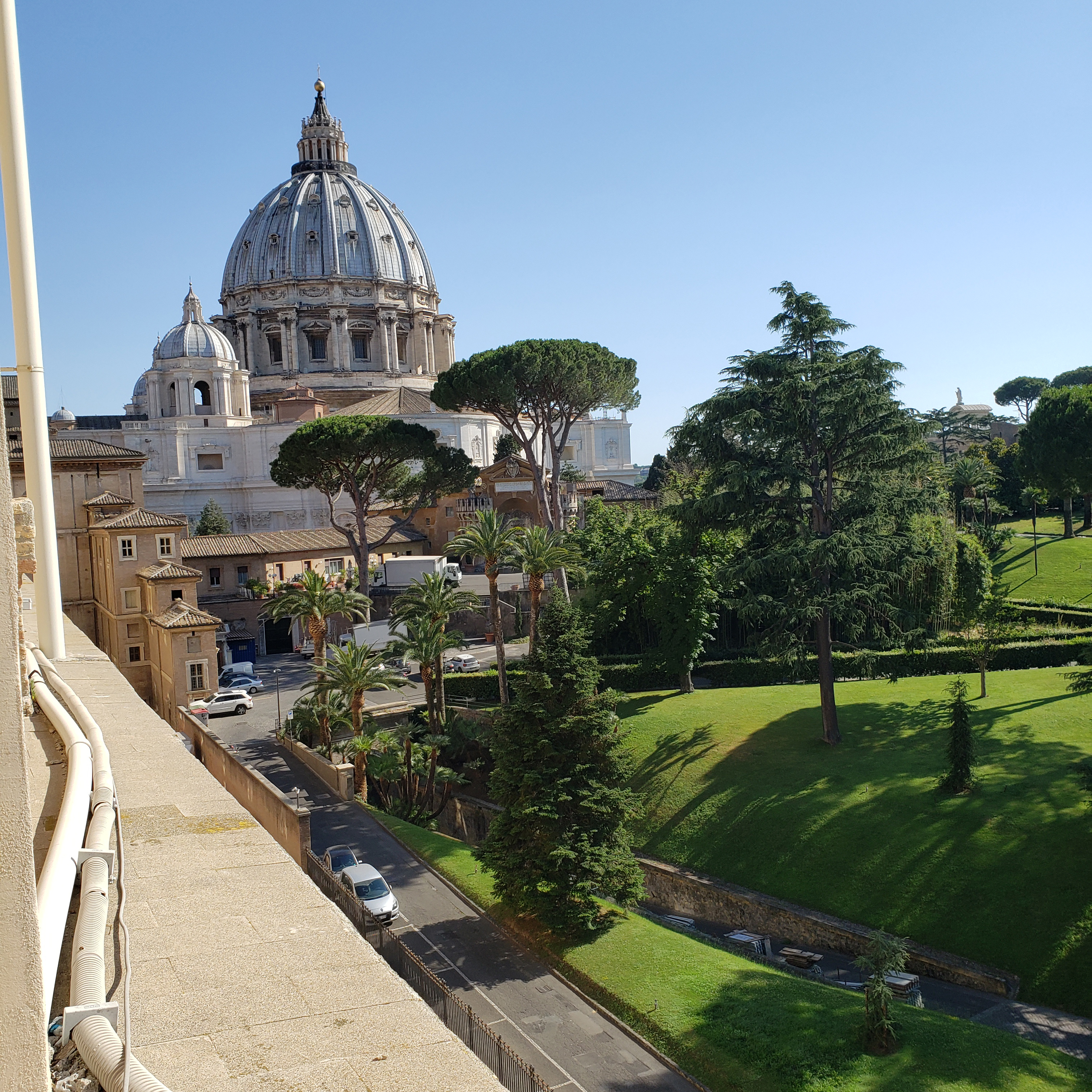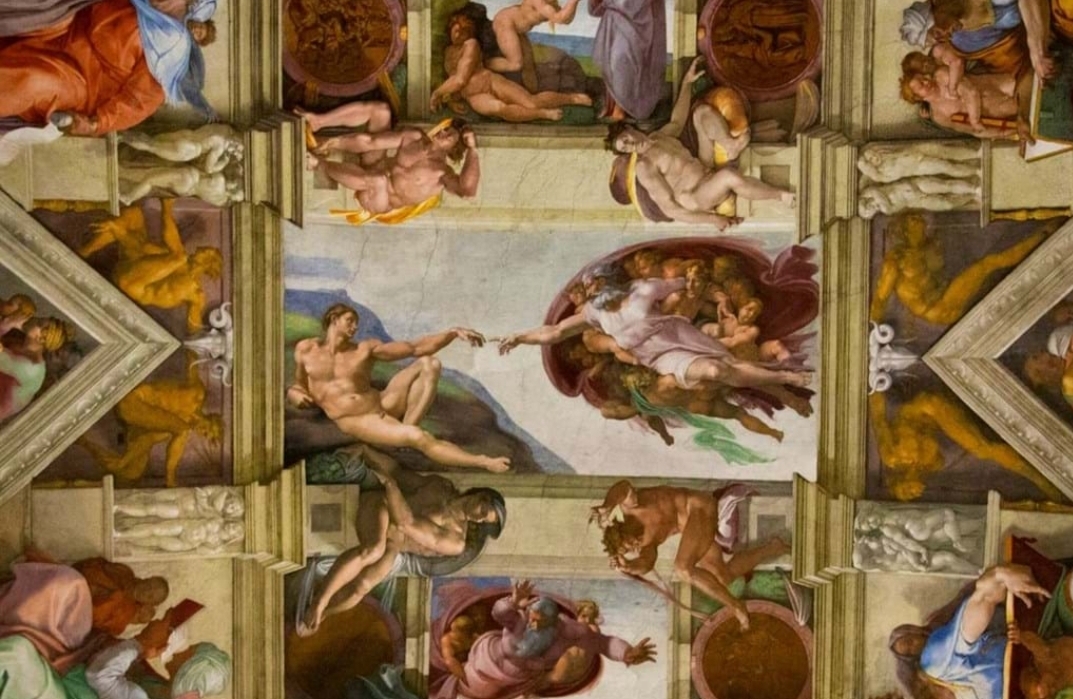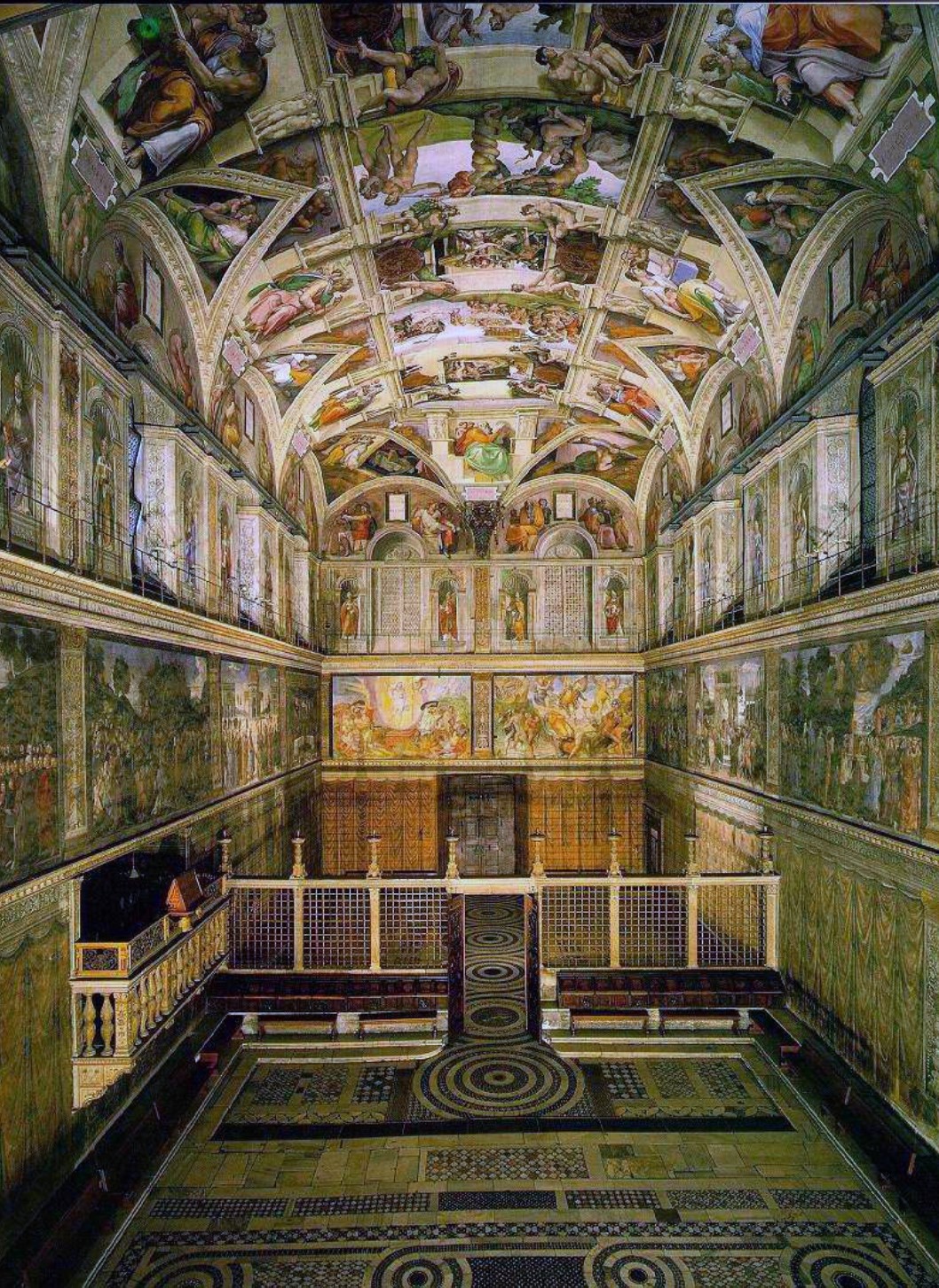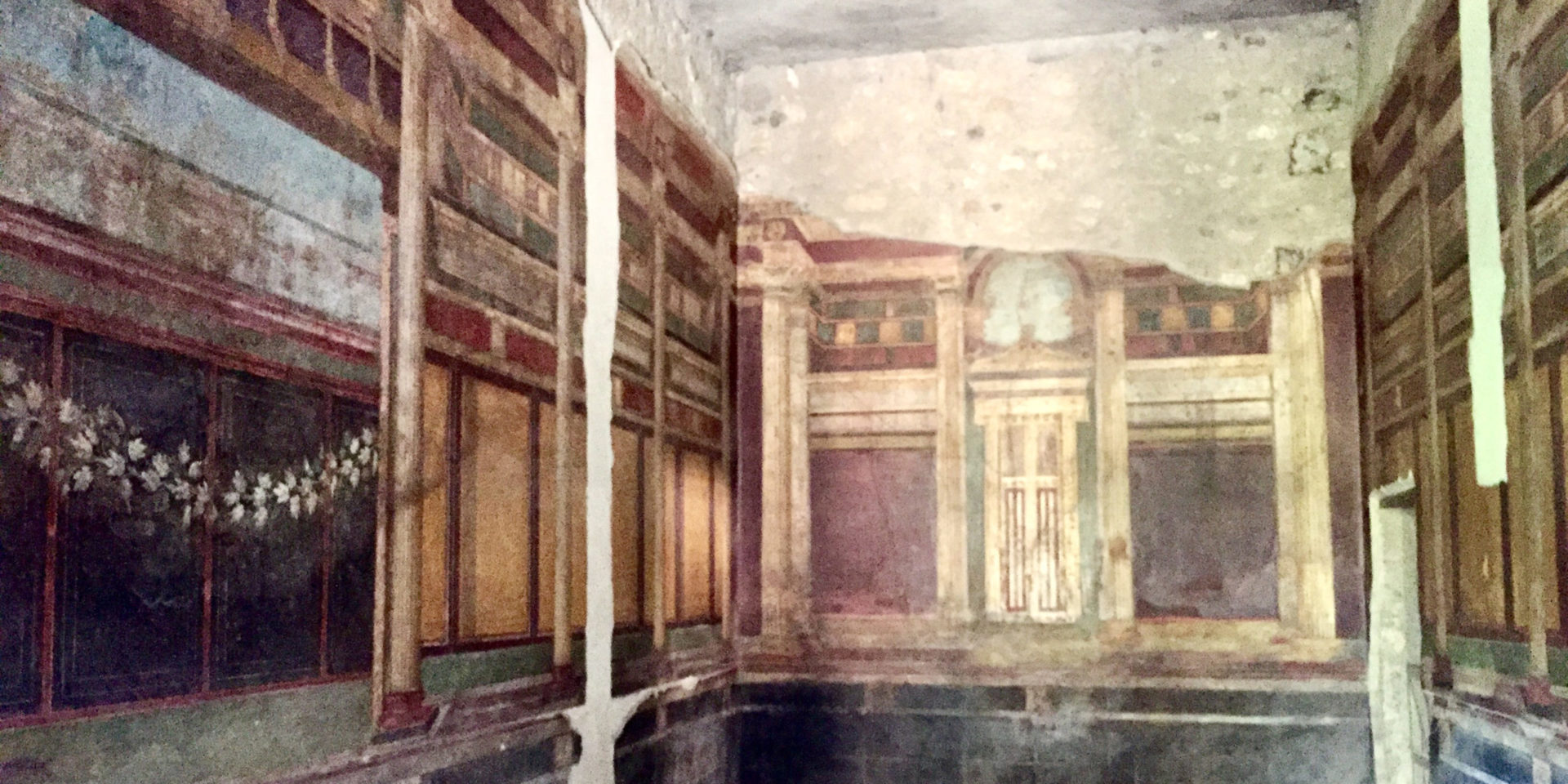ONE-MA3 – The King of the Paintbrush and the Heavens

Marcin Hajduczek ’22
“Visitors are reminded to cover their knees and shoulders, and that photography is strictly forbidden,” chimed the robotic voice over the speakers. It was drowned out by the excited murmur of a flood of tourists, myself among them.
“I cried when I saw it for the first time,” one of them whispered to a friend before being shushed by a security guard. In some ways, the pseudo-silence was appropriate; this was one of the most anticipated parts of the ONE-MA3 trip, and there was a sense that the room we were about to enter couldn’t possibly disappoint. The ubiquitous praise Professor Masic and all his archeologist colleagues had heaped on it created a mythological aura that no mortal could approach. The best I could do was approach the entrance, passing under the sign reading ‘Sistine Chapel’.

View of Saint Peter’s Basilica from the Vatican museum
Walking into the Chapel brought me into a utopia of inordinate color, ornamentation and artistic virtuosity. It was as if someone had packed the world’s most lavish museum into a single exhibit, and in some ways it served that exact role as the centerpiece of the Vatican Museum. Awe inspiring frescoes stretched from floor to ceiling, and refused to end where the walls curved into vaulted ceilings. Instead they soared to the heavens, with cherubs floating around painted columns whose shadows looked impossibly real. Centered around the delicate touch of Adam’s index finger with God in the Creation of Adam, the chapel’s religious motifs blended a rich Roman culture with Renaissance religion. The painted neoclassical architecture resembled a pantheon not of Roman deities, but of the Christian God.

The ceiling of the Sistine Chapel
I walked up to one of the walls to get a better look at the paintings above the tapestries draped around the lower part of the room. As I got nearer, however, I realized that the tapestries weren’t hanging, and instead were painted with such detail that the papal crests decorating them gleamed in the light. The paintings above showing snippets of Biblical history were no different, each made famous by generations of inspired artists. Yet each image seemed to draw my attention to the front wall that housed Michelangelo’s most recognizable work. Marveling at the intricacy of the Last Judgement, I froze in place, my feet firmly on the ground and my eyes unmoving from the enormous fresco. Years’ worth of delicate brushstrokes came together to create perhaps the most beautiful work of art I had ever seen.

The Sistine Chapel
“Michelangelo actually painted himself in there too,” a passing-by tourist off-handedly told me, reminding me of a lecture I had heard about the artist in an art history course. It was fitting that Michelangelo included himself in the Last Judgement as a flayed skin with his own face. Held in the fresco by Saint Bartholomew, it was Michelangelo’s desperate prayer for redemption- a plea that by shedding the sin of the body, the inner soul may be resurrected pure. It alluded to professor Masic’s earlier description of the room transcending mere mortals. The Sistine Chapel was a relic of both artistic ability and religious purity; Michelangelo knew he was only a god among men in one of those two regards.

Michelangelo’s famous ceiling paintings
“I was pretty disappointed when I heard taking photos wasn’t allowed,” said Ben, one of ONE-MA3’s avid photographers whose eyes were fixated on the Last Judgement. “But suddenly, I don’t think I could really ever capture this with my camera.” Michelangelo had been lucky enough to at least be supernatural in one of the Chapel’s purposes. The rest of us weren’t even worthy of taking pictures. The best we could do was stand in awe and feel incredibly lucky to see the Chapel in person.
Share on Bluesky


